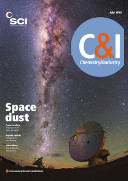Researchers have reported the first successful transplant of a circadian rhythm into a species without a so-called ‘body clock’. The work could lead to precisely timed release of drugs and other therapeutic applications.
Pamela Silver and her team at the Wyss Institute for Biologically Inspired Engineering at Harvard University, US, have transplanted the circadian mechanism found in cyanobacteria – the only bacteria known to naturally contain a circadian rhythm – into E.coli bacteria (Science Advances, doi: 10.1126/sciadv.1500358).
First, they removed the protein circuit responsible for regulating circadian oscillations and transplanted it into E. coli. They then linked the circuit to fluorescent proteins that lit up each time the circadian oscillations were triggered, causing the E. coli to glow rhythmically in a visual confirmation of the transplant’s success.
‘What’s really amazing is that we’ve demonstrated the modularity of biological systems – this finding goes beyond the “transplantability” of a circadian rhythm to open new doors to understanding how other modular biological circuits could be transplanted from one species to another,’ says Silver.
One potential application for circadian E. coli could be in probiotic pills to monitor bacteria in the gut as the human circadian rhythm has been shown to impact metabolism. Another could be to trigger drug release at a specific point in a patient’s circadian rhythm. Many drugs, including those commonly used to treat various cancers, fluctuate in their efficacy based on the time of day and the point in a patient’s circadian cycle when they are administered.
The cyanobacterial circadian oscillator or clock is unique in that it can be reconstituted in a test tube, explains Susan Golden, director of the Center for Circadian Biology at the University of California, San Diego (UCSD). However, ‘the complexity of the milieu of an E. coli cell seems to pose some confounding constraints because several labs have tried and failed previously to see an oscillation. The amplitude of the oscillation in E. coli is modest even in this paper, but the authors cleverly captured the output by using a synthetic readout, allowing them to see what others have not previously.’
The fact it works at all in E. coli opens the door to more applications, she adds. ‘Synthetic biology is at the very beginning of building useful circuits and engineering designer bacterial therapeutics, but I strongly suspect the capabilities and applications will explode in the near future.’
However, Rob Knight, a microbiome expert also at UCSD, points out that any using any genetically modified organism such as E. coli in a patient would require regulatory approval based on compelling medical need. But this work is important progress towards understanding how to transplant regulatory components ‘in a way that’s controllable, so they don’t unintentionally interact with each other – a very important goal for synthetic biology’.





